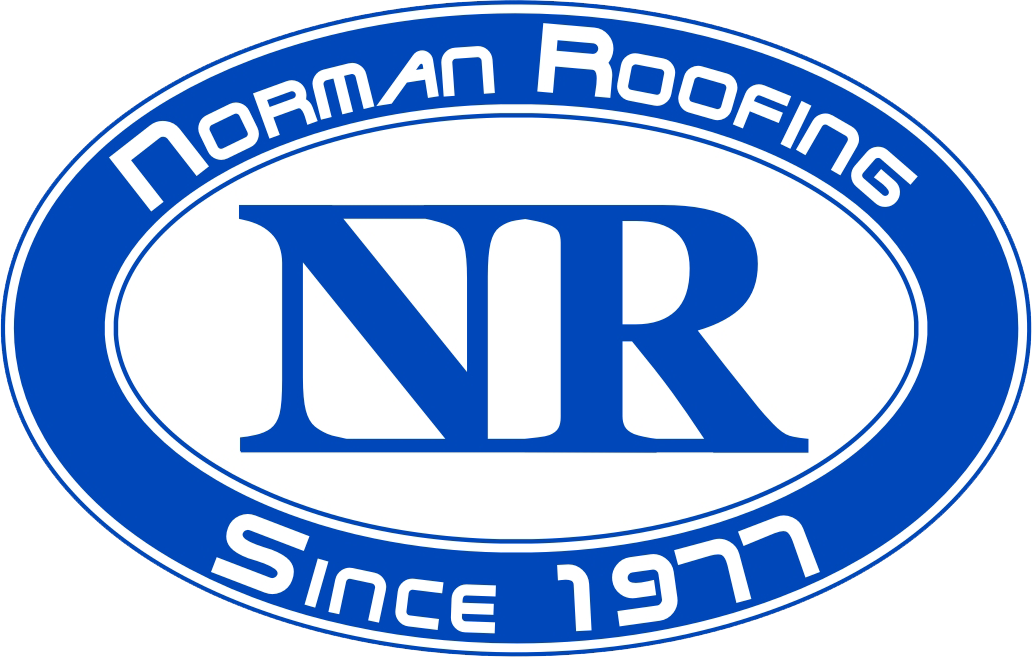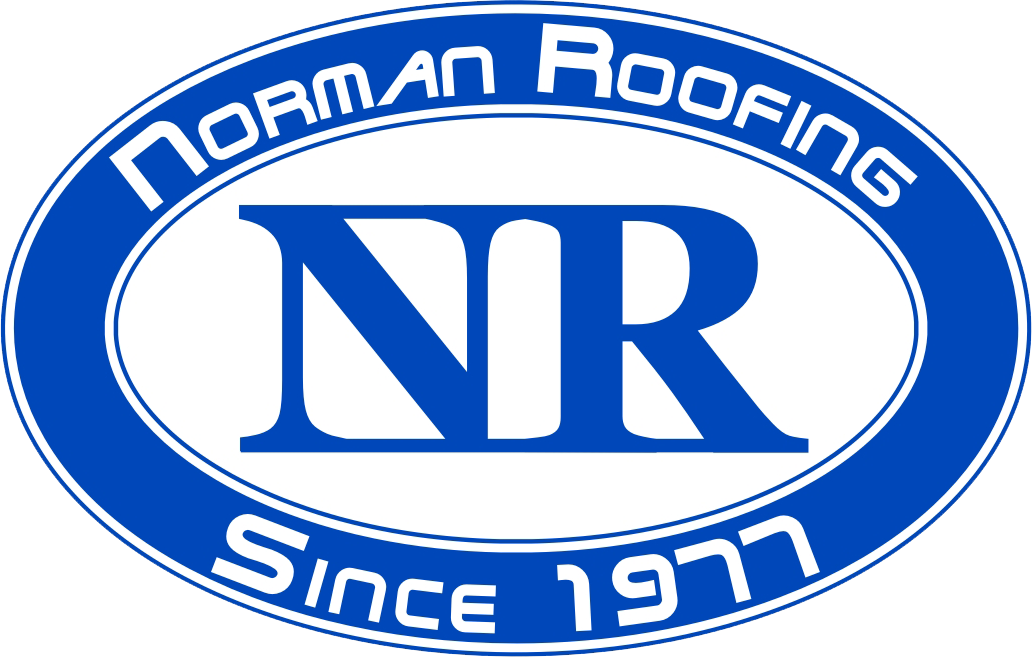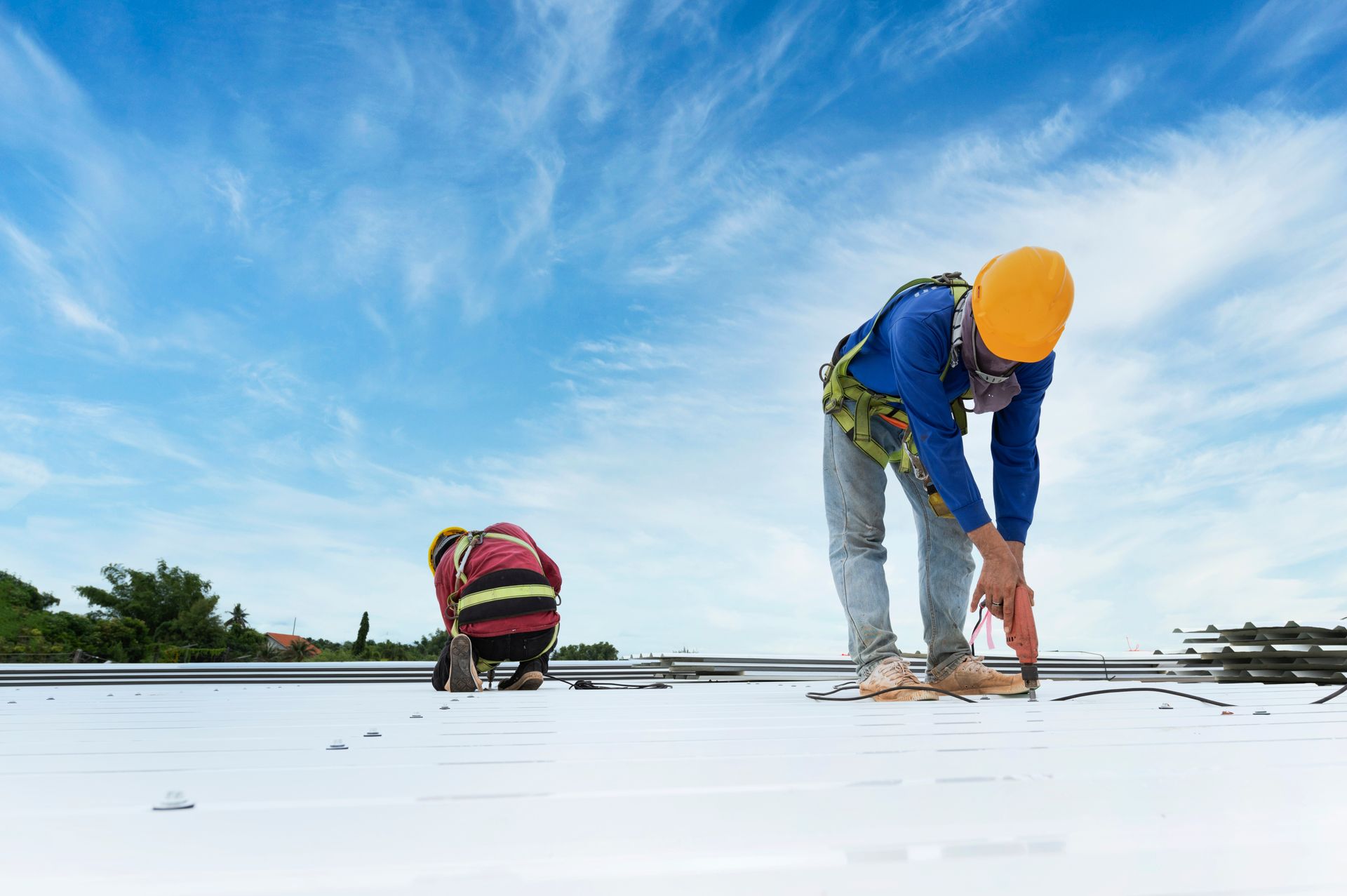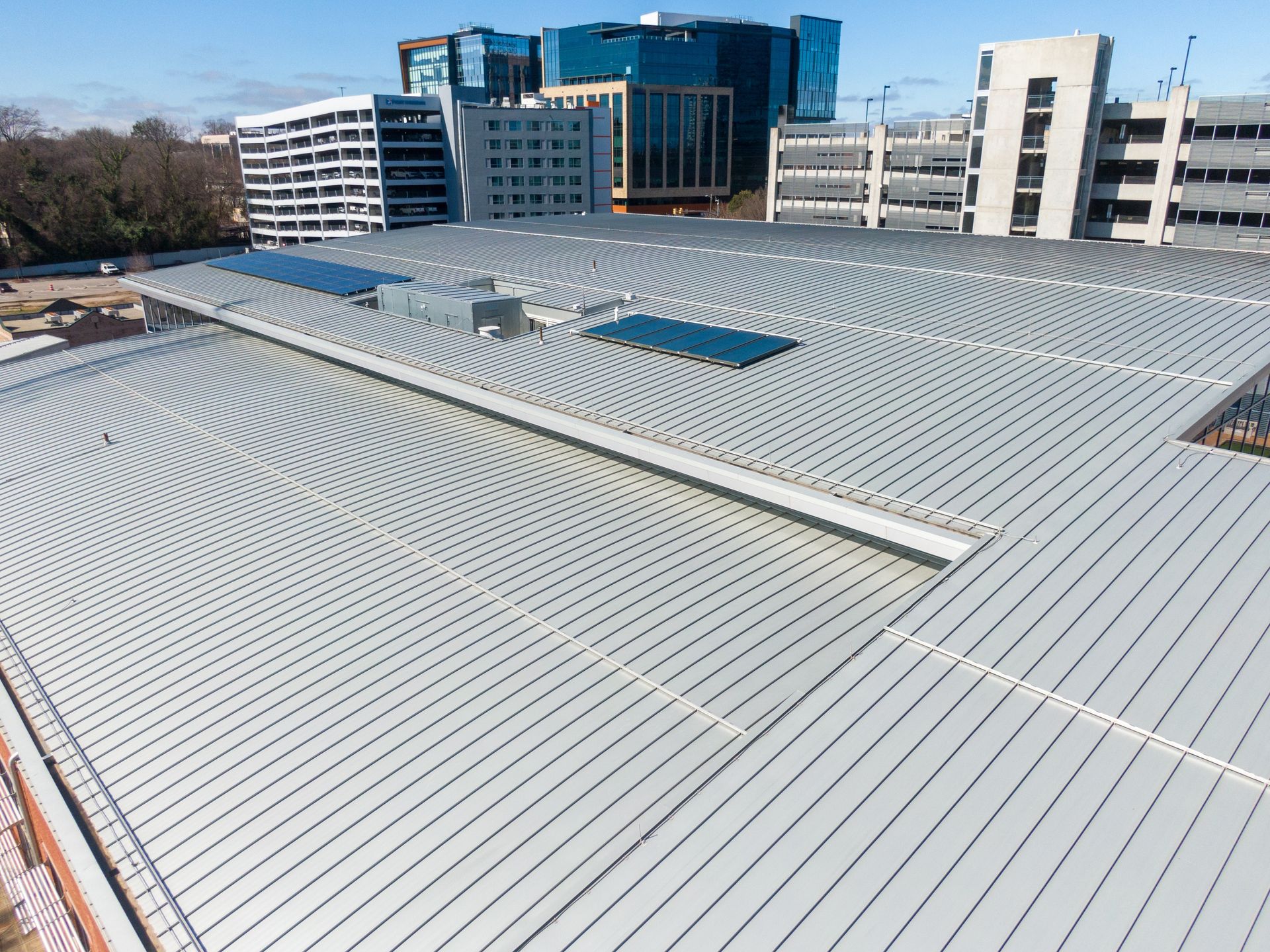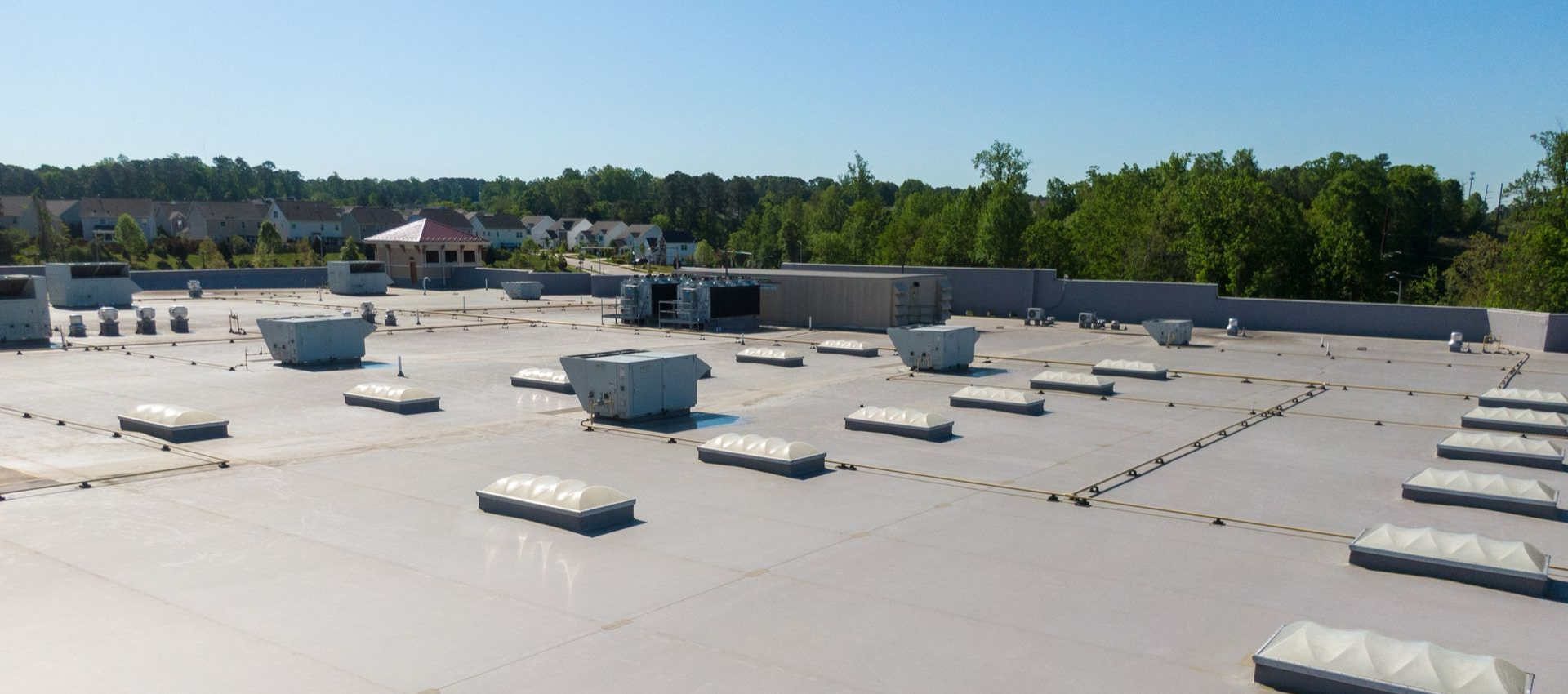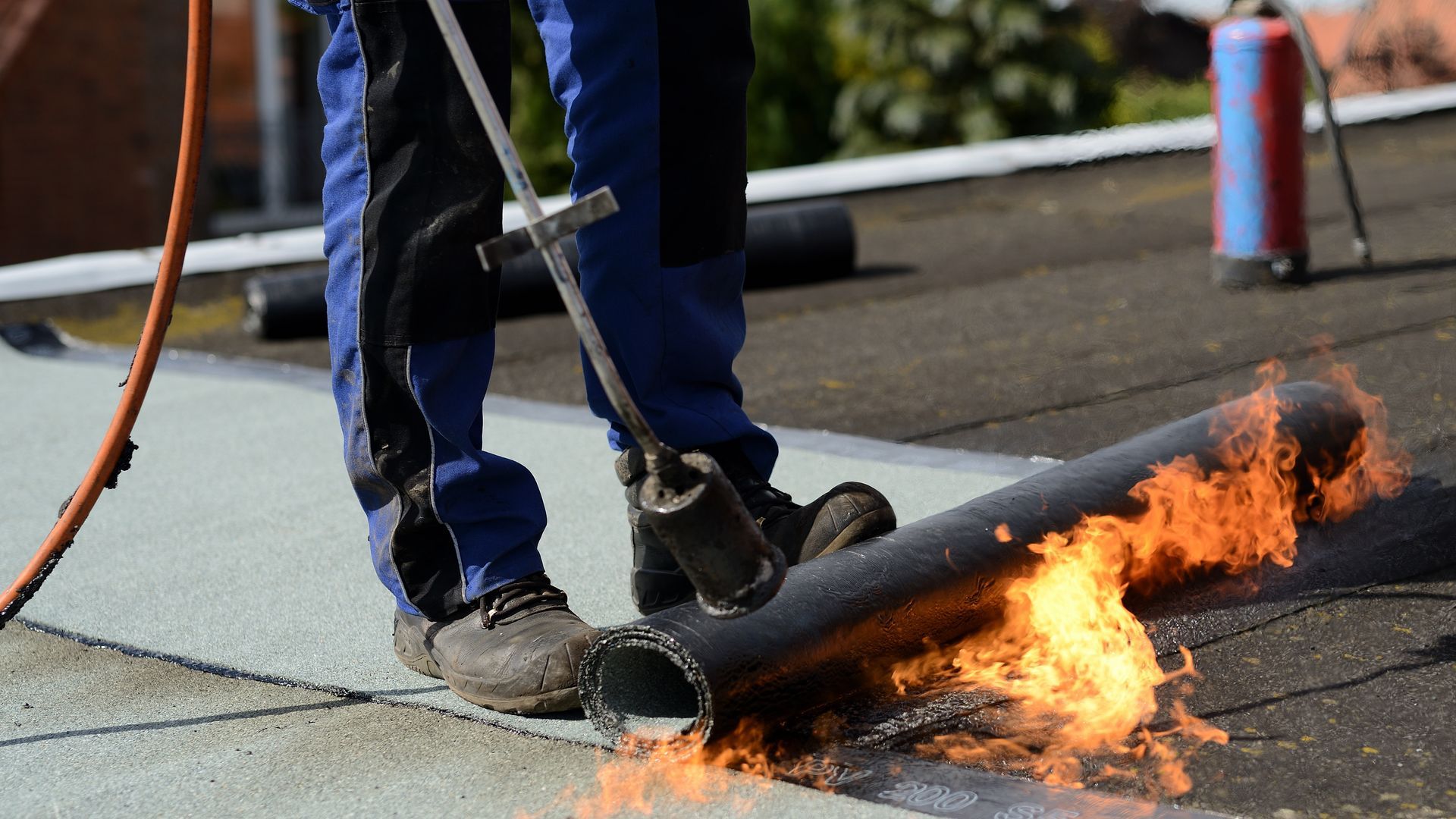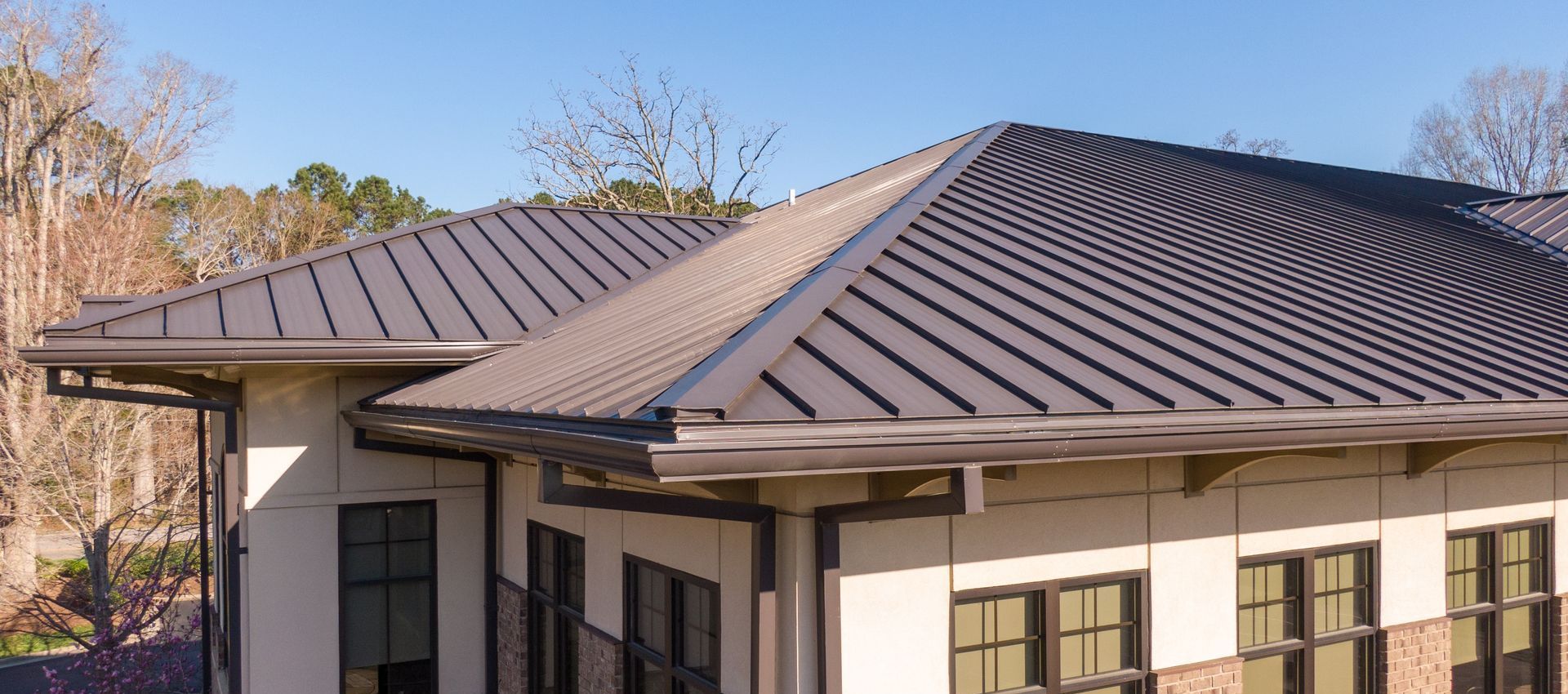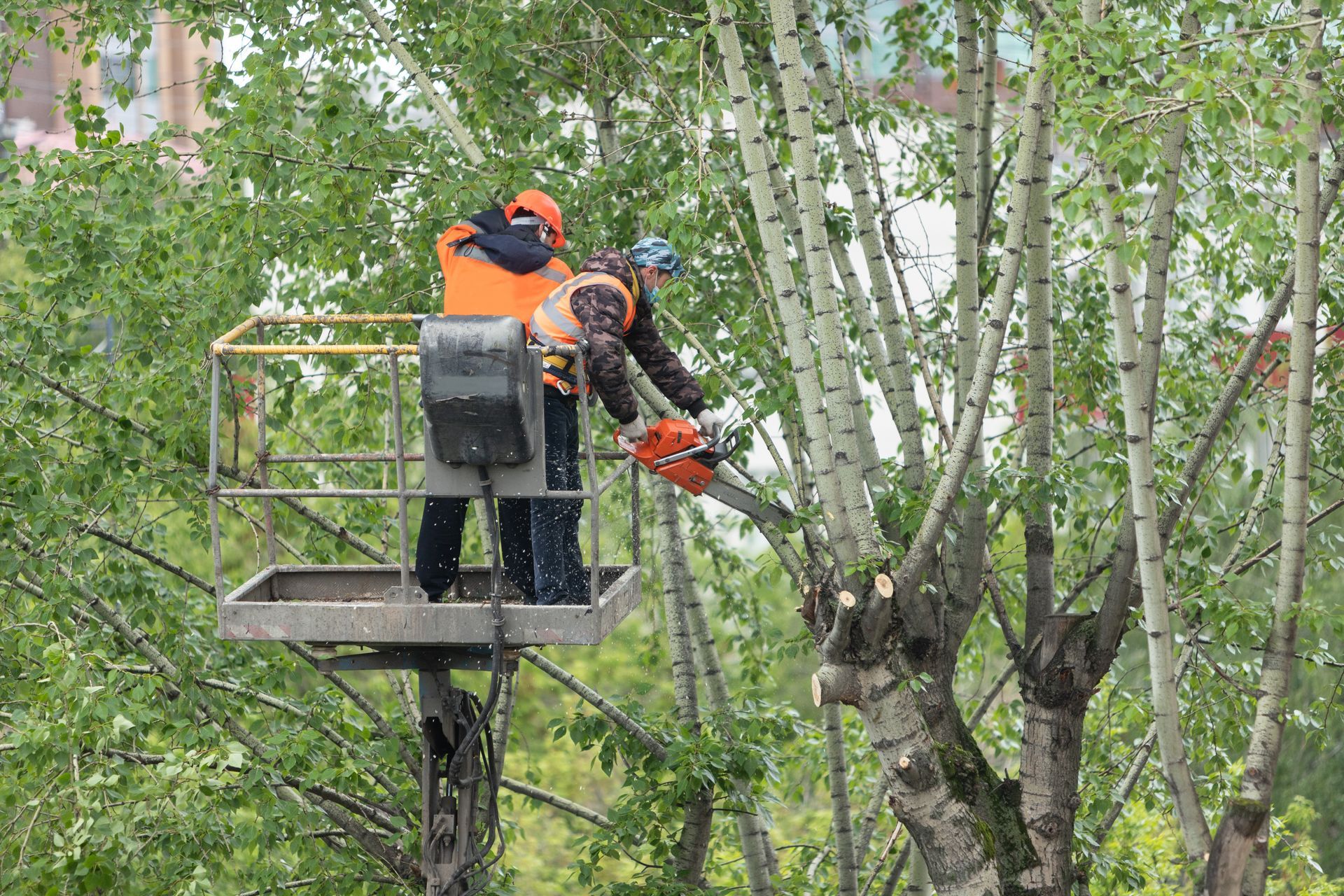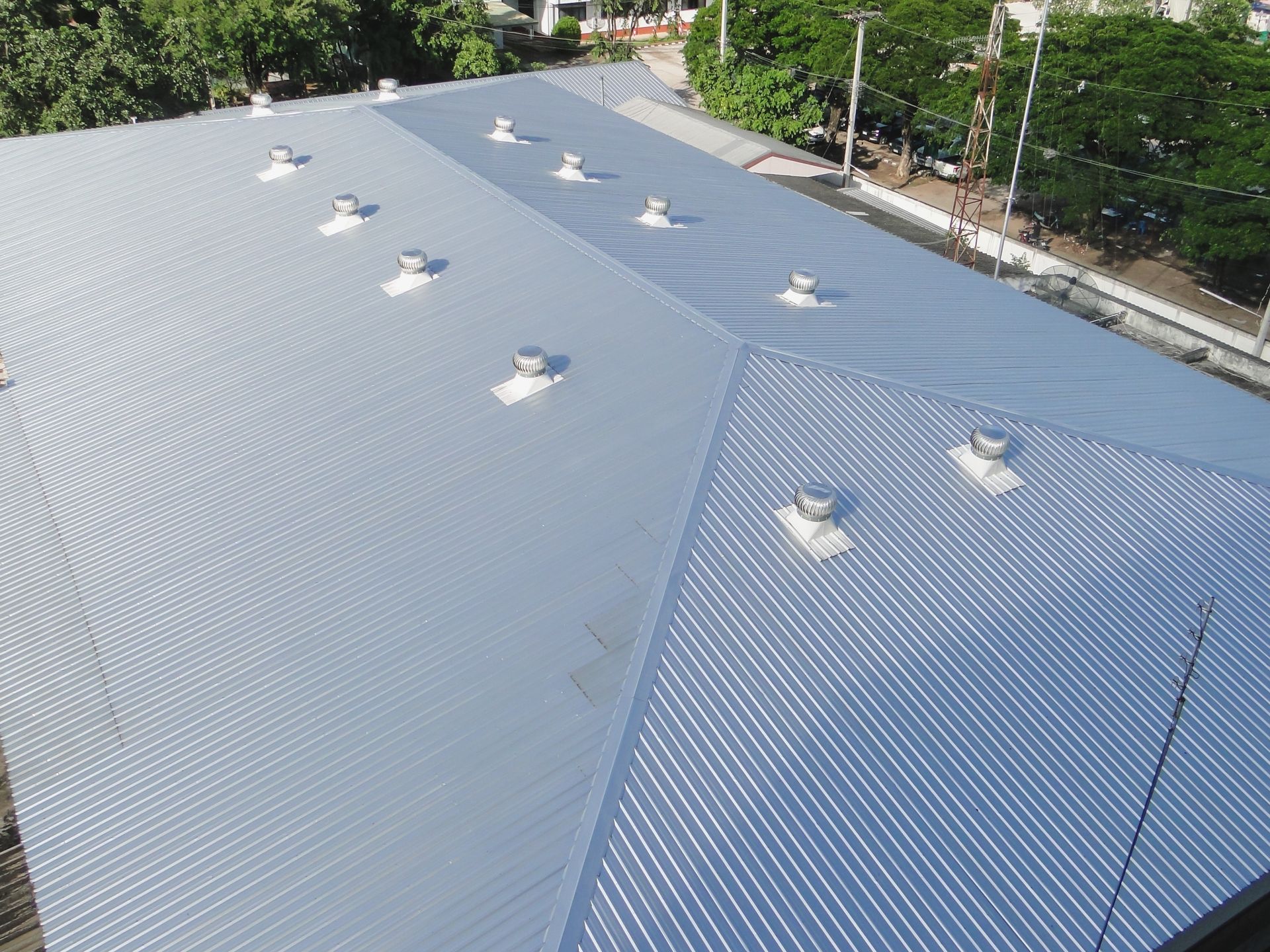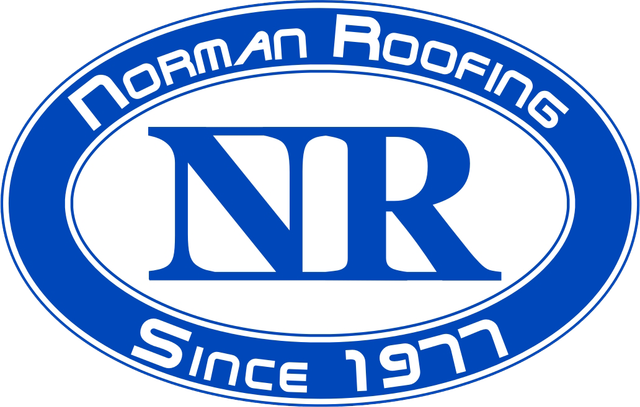Need a New Roof? | Your Guide to Low-Slope Roofing in MS & AL
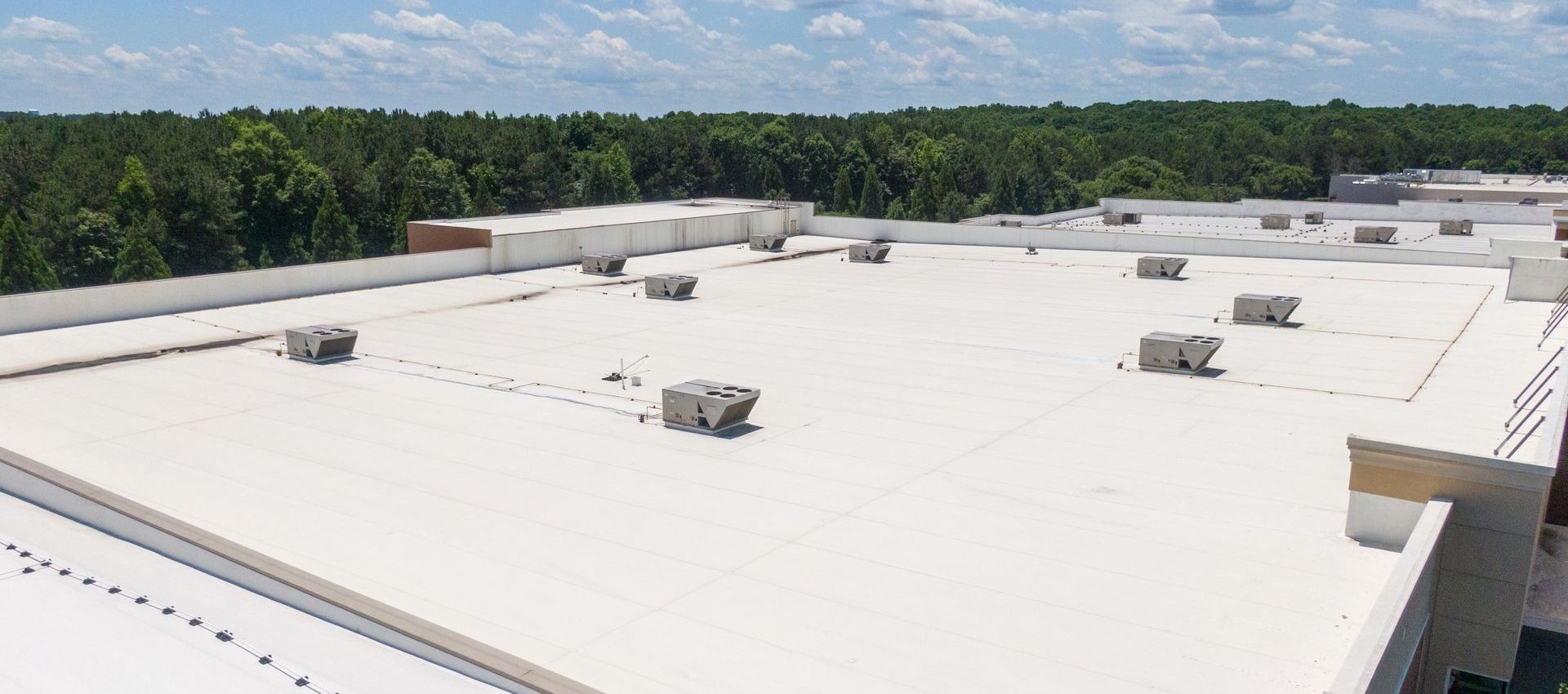
In Alabama and Mississippi, low-slope roofing is a common trend for commercial and industrial businesses. Like any other roofing structure, it requires regular maintenance and upkeep, and sometimes, that means getting a new roof.
However, choosing a new roof can be a difficult decision for business owners, especially with so many options for low-slope structures. That’s why our team at
Norman Roofing has created a comprehensive guide for low-slope roofing materials. We want to keep business owners informed about their options so they can determine which roofing solution is best for them.
Single-Ply Roofing
Single-ply roofing is a roofing system made from sheets of synthetic materials. While it is made from many sheets, it is applied in a single layer, hence the name, “single-ply.” There are three main types:
Polyvinyl Chloride (PVC)
PVC is a type of roofing material made from thermoplastic, a special type of plastic that becomes soft when heated. Roofers enjoy this feature because it makes it easier to reshape when it's time for installation. PVC is typically used in colder climates since it can degrade or melt in extreme heat.
Ethylene Propylene Diene Monomer (EPDM)
EPDM is a type of roofing material made from synthetic rubber. The rubber is durable yet flexible. It’s a popular roofing option in warmer climates because it’s strong enough to withstand harsh weather but isn’t so rigid that it cracks under intense heat.
Thermoplastic Polyolefin (TPO)
TPO is a type of roofing material made from both thermoplastic and synthetic rubber. Since it’s made from both materials, it is flexible and easy to reshape. It is very resistant to impact and tears. TPO can also handle extreme heat and cold; it remains flexible under frigid conditions and reflects UV rays in sunny areas.
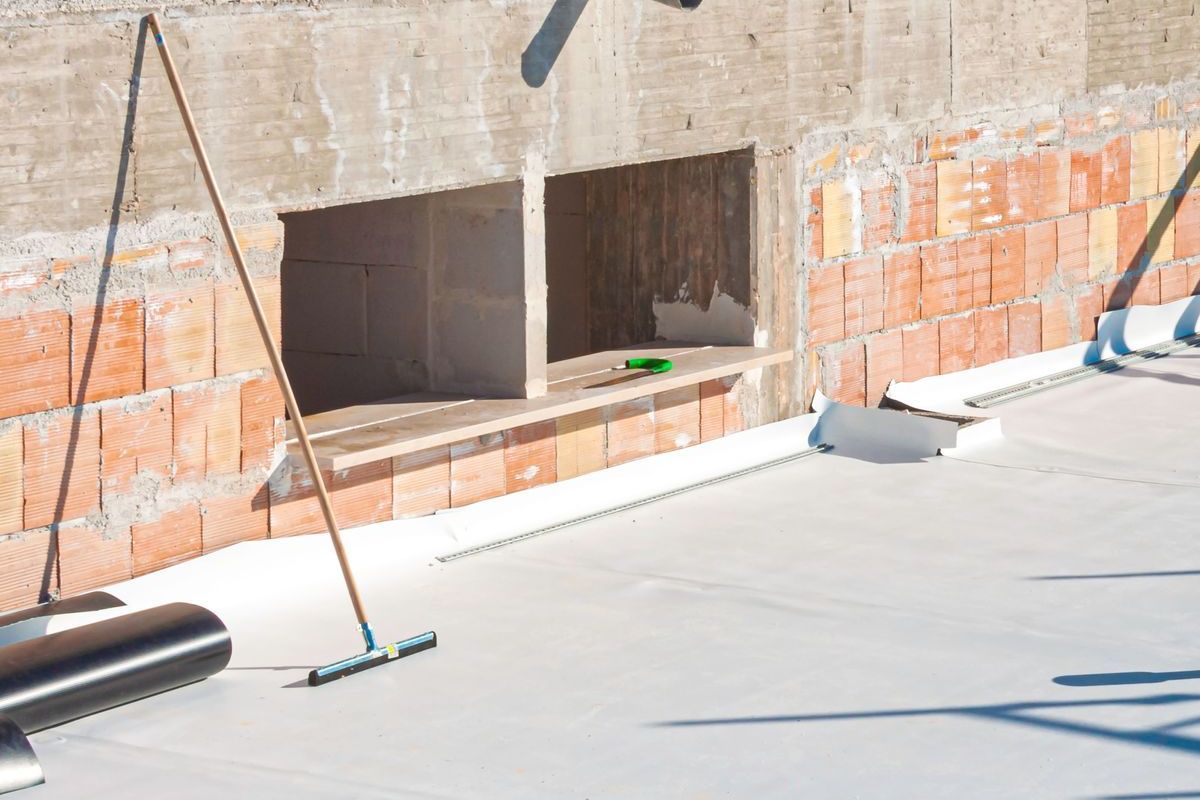
What Are the Benefits of Single-Ply Roofing?
- Durable: resistant to water, UV radiation and harsh weather conditions
- Flexible: Conforms to the roof shape, expanding and contracting under extreme temps
- Easy to maintain: Requires annual maintenance, roofing system is easy to repair
- Lightweight: Doesn’t place pressure on the existing roofing system
- Cost-effective: Energy efficiency and low maintenance reduces costs
Downsides
- Release Volatile Organic Compounds: If left unmaintained, can release dangerous chemicals (VOCs) into the atmosphere
- Vulnerable to punctures: Easy to puncture
- Higher initial cost: Has higher upfront costs than other roofing options
Modified Bitumen
Modified bitumen is a type of asphalt-based roofing. This material is made by mixing asphalt (bitumen) with either synthetic rubber or plastic to achieve the final result.
Unlike single-ply roofing, modified bitumen is applied in two phases: first, a base layer is added, followed by a cap layer to finish the application. Depending on the needs of the roof, additional layers may be required to achieve the best result. There are two main types of modified bitumen:
Styrene-Butadiene-Styrene (SBS)
BS is a type of roofing material made from asphalt, synthetic rubber and thermoplastic. Similar to TPO, it is flexible, easy to install and performs well in cold temperatures.
Atactic Polypropylene (APP)
APP is a type of roofing material made from thermoplastic and asphalt. APP’s thermoplastic components are more rigid than SBS and PVC, making it more resistant to intense heat and UV rays. Because of this, APP is used regularly in hot climates.
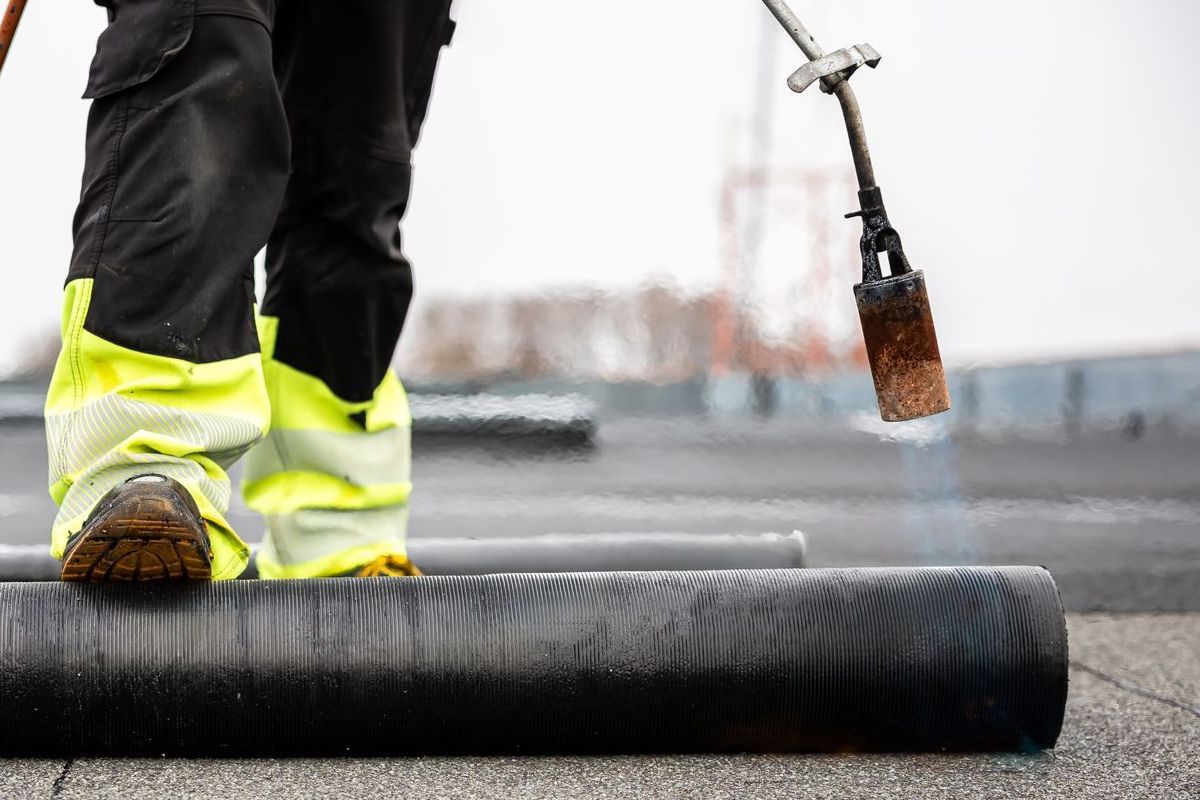
Benefits of Bitumen Roofing
- Durable: resistant to water, UV radiation, fire and harsh weather
- Flexible: Conforms to the roof shape, expanding and contracting under extreme temps
- Easy to repair: Easier to fix than other roofing options
- Resistant to tears: Layered design makes them less susceptible to tears
- Cost-effective: Long lifespan and easy installation offsets costs
Downsides
- Blisters: May develop bubbles from trapped moisture or poor ventilation
- Seam failure:
- Torch down method: This installation method is harmful to the environment
Built-up roofing (BUR)
Built-up roofing is a roofing system composed of bitumen, fabric and gravel. Unlike the other roofs, the materials are not mixed together. Rather, they are layered on top of each other to form the final result. Essentially, sheets of felt are sandwiched between layers of bitumen.
Once the roof has been ”built up,” it is finished with a top layer. Typically this final layer is made of gravel, granules or reflective coating. This layered approach offers maximum protection and sealing for the roof’s structure. Typically, built-up roofing performs better in warmer climates.
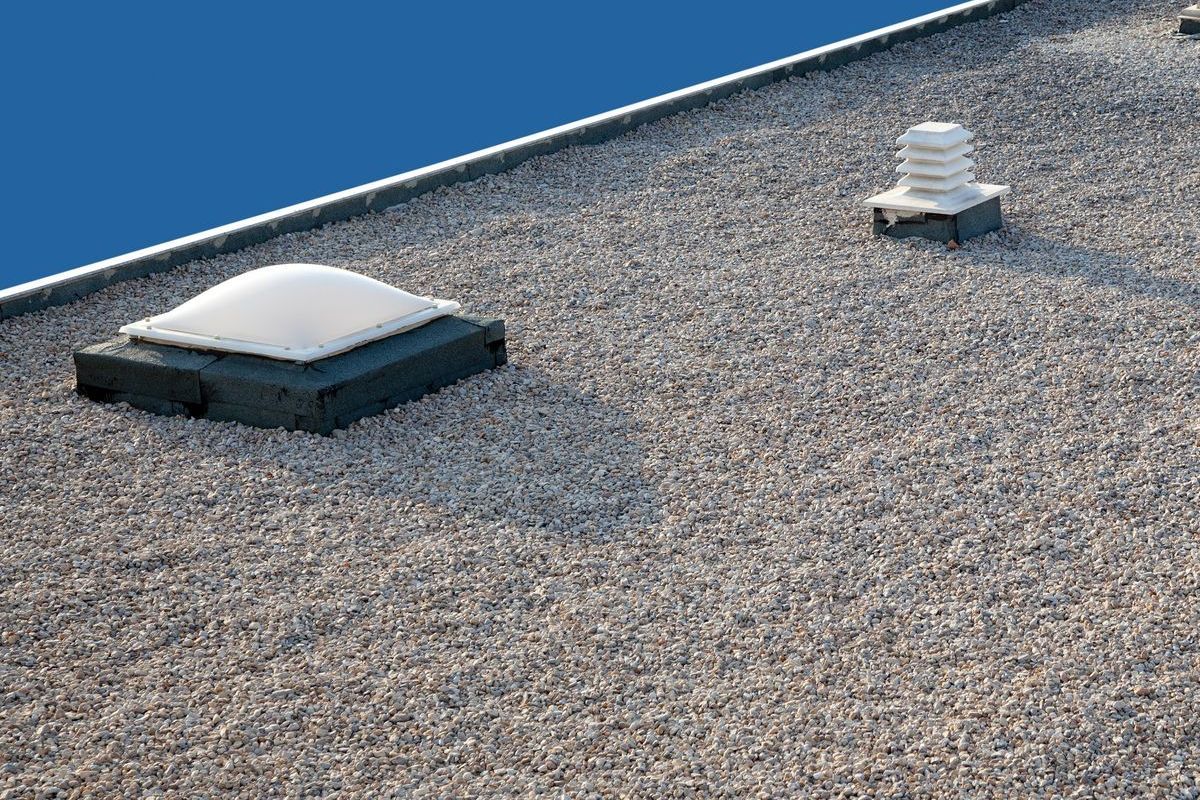
Benefits
- Multiple layers of protection: Addition protection reduces the likelihood of water penetration
- Durable: resistant to water, UV radiation, fire and extreme weather
- Long service life: Lasts about 20 to 30 years
- Cheap material: Material is typically cheaper than other roofing materials
Downsides
- Labor-intensive installation: Requires lots of labor to complete an installation
- Heavy material: May put additional weight on the roofing structure
- Leaks: Prone to leaking, possibly leading to water damage and mold growth
Liquid-Applied Coatings
These coatings are a type of membrane that provides additional protection for existing low-slop roofs. They are typically made from a synthetic material called polymer-based resin.
There are a variety of resins including acrylic, silicone, polyurethane and PMMA. Resins are typically paired with reinforcing fabrics to make the coatings more durable. Liquid-applied coatings can be used in both hot and cold environments.
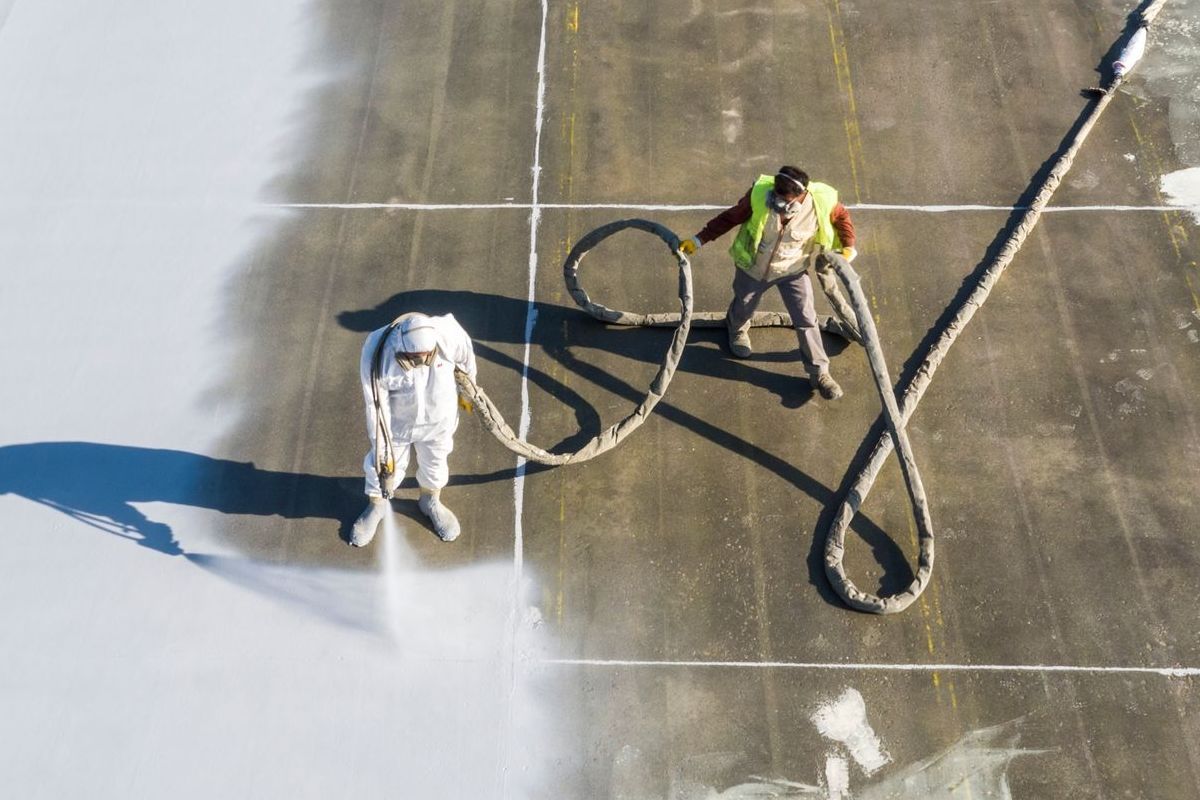
Benefits
- Seamless waterproof: Prevents leaks and water from entering the roof structure
- Sustainable: Minimize waste since roofs typically need less repairs
- Energy efficient: reflects heat which lowers energy consumption
- Easy to install: Easy application, less labor is required
Downsides
- Release VOCs: If left unmaintained, can release dangerous chemicals into the atmosphere
- Difficult to apply: Hard to apply evenly, especially on uneven roofs
- Higher initial cost: Can be costly to install
- Air bubbles: Increased risk of developing air bubbles
What Does This Mean for AL and MS Businesses?
Fortunately, Alabama and Mississippi businesses have plenty of options when it comes to low-slope roofing. If you’re interested in going with a single-ply roof, then you may consider EDPM and TPO since they perform better in warmer climates.
If modified bitumen appeals to you, then APP may be the best option for your business. Or, you can go with Built-up roofing, a solid option for businesses operating in the Southeast. Ultimately, you may have to weigh each roofing system’s benefits and downsides to see which option is best for your business.
It’s also recommended that you consult with a professional roofer to help narrow down your options. A trained professional can ensure that the materials and installation methods chosen are best suited to your specific home, climate and budget.
Looking for Professional Roofers? Norman Roofing is Standing By!
Looking to install a new roof for your commercial or industrial property? Contact the experts at Norman Roofing today! Located in Meridian, we’ve been serving communities across Mississippi and Alabama for 48 years.
We not only perform commercial and industrial roof installations, but we also offer emergency roofing services and metal roofing services. If you're ready to work with a team that values quality craftsmanship, give us a call at 601-483-4079. To learn more about our roofing options, visit our website by clicking the link
here.

